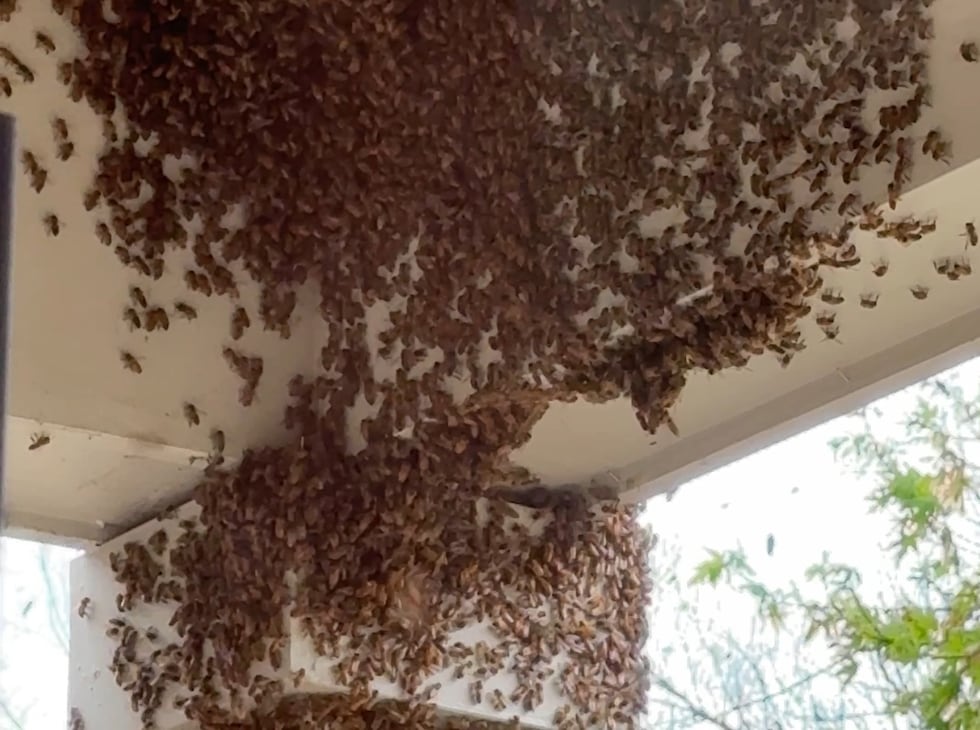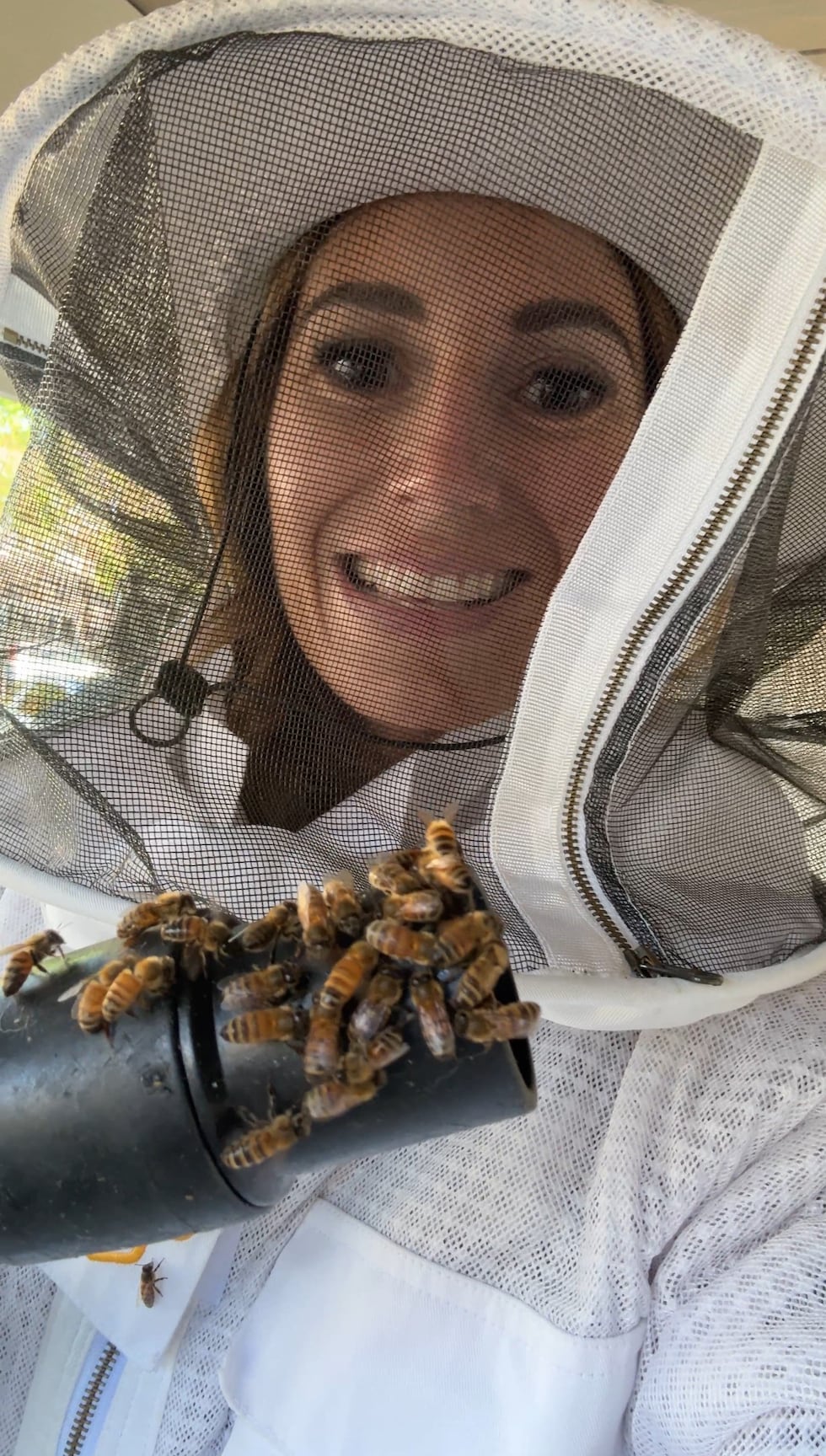‘Swarm season’ is here: What to do if honey bees arrive at your home
As flowers begin to bloom and the weather warms, honey bee colonies are breaking off and searching for new places to colonize.
Swarm season lasts through June and means honey bees could begin building hives outside, or even inside, of homes. Just ask WSMV News Anchor Amanda Hara. A swarm arrived at her home on Friday, April 4, and quickly started building honey combs.

Professional beekeeper John Ratcliff responded to collect and relocate the bees.
Ratcliff, who owns Ratcliff Honey Farm and serves as the president of the Nashville Area Beekeeping Association (NABA), reported an increase in removal requests from April through June when colonies become too large and are forced to break off.
“The queen will leave the hive along with up to half of the worker bees. The swarm will cluster out in the open, often on a tree limb, while scout bees seek a suitable home. Sometimes, a swarm will move on within a few hours, sometimes, it may take a few days. When bees are swarming, they are the least defensive and not very likely to sting,” according to NABA.
Honeybees can swarm outside or inside a home, a shed, or even a car.
“Many times, these swarms will find a hole in the side of a building and will move into an attic, eaves, or wall. Once they’ve moved in, it is rather difficult to remove them,” NABA said.
Ratcliff used a heat-sensing camera to make sure the swarm hadn’t moved inside of Hara’s home.
Then, he and Hara used a special vacuum to safely collect the honey bees in a transport can. The process revealed the bees had already created three honey combs and deposited eggs into each cavity. Ratcliff said another few weeks and there would have been honey!

Once all the bees were collected, Ratcliff removed the honeycomb and scraped leftover wax from the porch ceiling. He pointed out that the bees’ pheromones make their wax smell like lemongrass.
“You’ve already been marked. That smell, they can smell that. That’s an attractant,” Ratcliff said. “So, another bee swarm might be coming?” Hara asked. “You’ve got my number,” Ratcliff said.
Ratcliff says it’s important not to destroy a thriving bee colony.
“No bees, no food?” Hara asked.
“That’s right, over a third of all of our food in our pantry comes from pollinated products that bees have a hand in. Literally, have a hand in,” Ratcliff said.
Pollinators like honey bees are responsible for helping pollinate one out of every three bites of the food you eat, according to the United States Department of Agriculture.
“Three-fourths of the world’s flowering plants and about 35 percent of the world’s food crops depend on animal pollinators to reproduce. That’s one out of every three bites of food you eat. More than 3,500 species of native bees help increase crop yields. Some scientists estimate that one out of every three bites of food we eat exists because of animal pollinators like bees, butterflies and moths, birds and bats, and beetles and other insects,” the USDA reports.
Under the Tennessee Apiary Act, it is illegal to deliberately expose free-flying honey bees to a lethal substance. Instead, call a professional beekeeper for help with removal.
If you need help with a swarm, the Tennessee Beekeepers Association has a list of resources.
댓글
댓글 쓰기